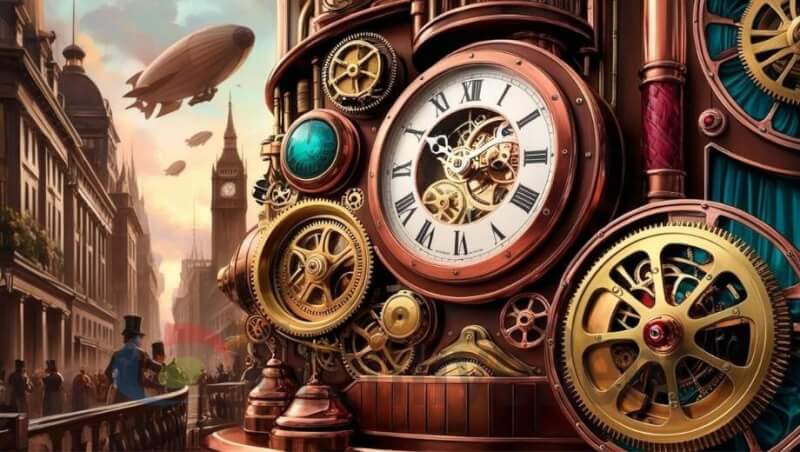Steampunk is a genre that has piqued the imagination of people worldwide. It combines the refinement of Victorian times with the imagination of speculative fiction. This distinct aesthetic, defined by its intricate machinery, retro-futuristic technology, and daring attitude, has inspired writers, painters, and craftspeople to create a wide range of intriguing works. In this one-of-a-kind piece, we look at the history, motivations, and continued popularity of steampunk as a vibrant and imaginative artistic movement.

Steampunk’s beginnings
Steampunk originated in Victorian-era speculative fiction written by authors such as Jules Verne and H.G. Wells, who imagined a society ruled by steam technology and Victorian sensibilities. Steampunk artists use a fanciful lens on history, fusing pieces of the past with thoughts of an alternate future, and they take inspiration from these literary works as well as the aesthetic of the Industrial Revolution.
Reimagining Victorian Aesthetics
Steampunk originated in Victorian-era speculative fiction written by authors such as Jules Verne and H.G. Wells, who imagined a society ruled by steam technology and Victorian sensibilities. Steampunk artists use a fanciful lens on history, fusing pieces of the past with thoughts of an alternate future, and they take inspiration from these literary works as well as the Industrial Revolution’s aesthetic.
Old-fashioned Future Technology
The steampunk aesthetic is based on the concept of retro-futuristic technology, which envisions a future in the past. Steampunk is a genre of fiction that combines the beauty and craftsmanship of bygone ages with science and ingenuity. Steam-powered engines, aircraft, and mechanical devices are the dominant features of this universe. Creating complex and complicated machinery that blurs the boundaries between imagination and reality is a task that steampunk artists relish.
Experimentation and Discovery
In addition to being aesthetically pleasing, steampunk celebrates travel and adventure. Steampunk authors are inspired by the daring tales of Victorian-era explorers and inventors, and they create stories with strange characters, exotic locations, and daring adventures. Whether via books, artwork, or cosplay, devotees embrace the spirit of exploration and adventure at the core of the steampunk ethos by losing themselves in these magical worlds.
Durable Allure and Cultural Influence
Steampunk has attracted a devoted global fan base despite its limited appeal; fans congregate at conventions, festivals, and online forums to celebrate their mutual passion for the subgenre. Additionally, steampunk has left an impact on popular culture, influencing everything from literature and cinema to fashion and design. The spirit of steampunk will live on for many decades to come thanks to its ageless aesthetic and creative narrative, which enthral audiences of all ages.
Steampunk art is a living example of the creative and imaginative powers that never go out of style. Steampunk artists take us to a world where the past and the future merge in a flurry of adventure and creativity by fusing Victorian aesthetics with futuristic vision. We are reminded of the endless possibilities of artistic expression and the transformational power of creativity to inspire, enchant, and take us to new regions of imagination as we explore the rich tapestry of steampunk art and culture.




